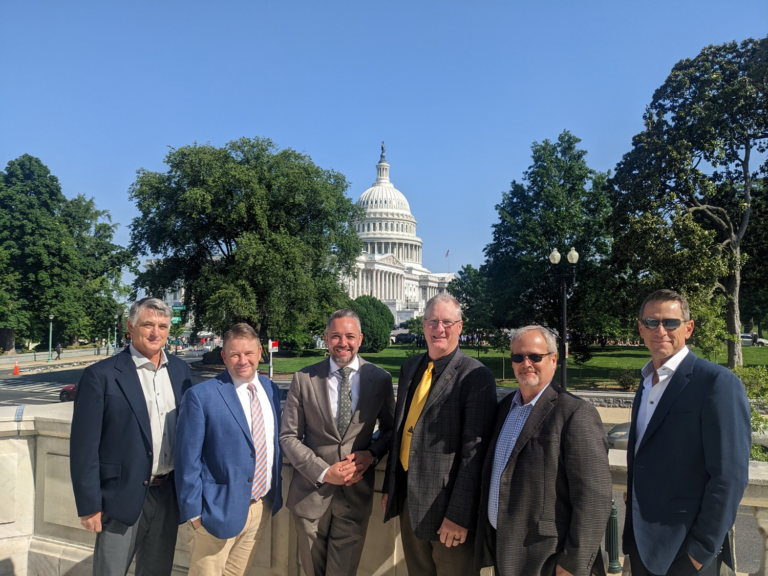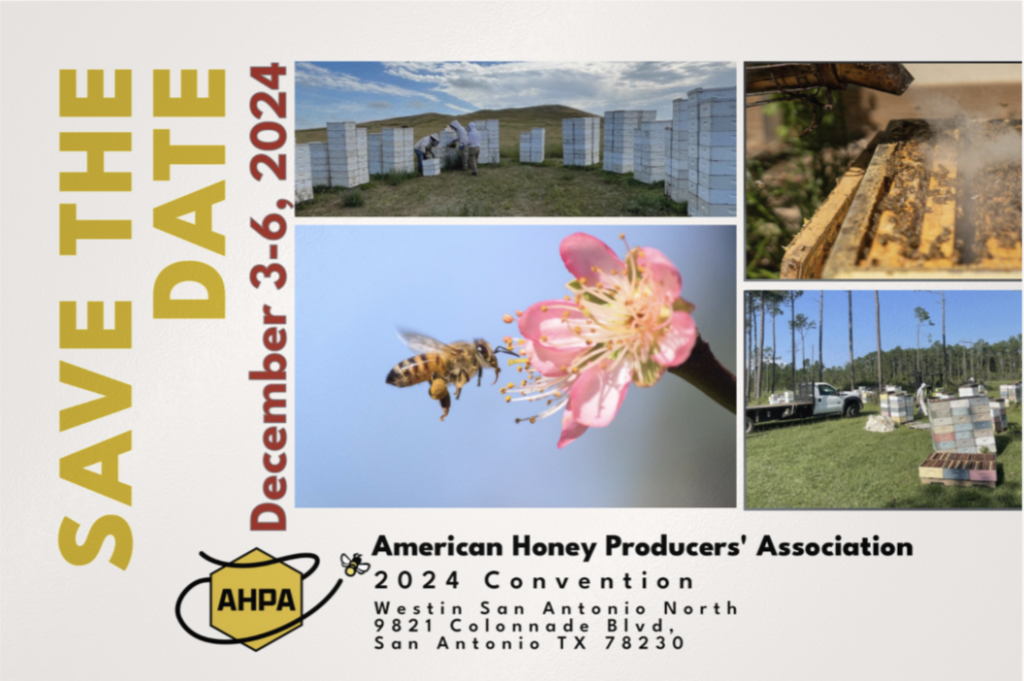The American Honey Producers Association (AHPA) is an organization with over 550 members that are people just like you— beekeepers making their living from the production of honey.
The AHPA is dedicated to promoting the common interest and general welfare of every American honey producer. From the backyard beekeeper to large commercial beekeeping, whether you run 1 to 2 hives or 80,000 hives, the AHPA pledges to work to improve the future of beekeeping for all.

AHPA Executive Board in Washington D.C. From left to right, Scott Hamilton, Chris Hiatt, Eric Silva, Steven Coy, Kelvin Adee and Matt Halgebwachs
Latest News - AHPA Press Release
FOR IMMEDIATE RELEASE
USDA NASS 2022 Ag Census Sparks Debate Over Honey Bee Population Reporting
California, April 10,2024 – The USDA NASS 2022 Ag Census reported a record high 3.8 million honey bee colonies in the United States, an increase of 25% over the last bi-decade census. However, these USDA numbers directly contradict the same agency’s own yearly honey report and honey bee report. Those reports estimate honey bee population numbers between 2.5 and 2.9 million colonies respectively for the exact same year (2022), and have consistently reported honey bee colonies in that range for years.
Some media outlets have suggested that the latest numbers result from a rise in beekeeping popularity as a hobby in both rural and urban areas. The reality is that hobbyists make up approximately 95% of the total number of beekeepers but only manage 7% of the total number of colonies according to the 2022 National Colony Loss and Management (BIP 2022). Thus, this explanation is not likely.
The discrepancies are more likely due to a combination of factors. First, the 5-year Ag Census methodology includes surveying farms which “host” colonies, but are not necessarily beekeeping operations themselves. Beekeepers and their commercial honey bee colonies are migratory, meaning they are hosted on different lands and often by different land owners throughout the year. Surveying host farms could therefore result in double or even triple counting the same colonies. For example, it is not unusual for a beekeeper to winter his honey bee colonies in Mississippi, move them to California for almond pollination in February and produce honey with those same colonies in the summer in North Dakota.
Second, USDA NASS confirmed that this Ag Census had a low response rate, resulting in the use of adjustment factors to extrapolate results. While it is unclear how these adjustments impacted the results, it may contribute to the substantial discrepancies relative to annual surveys that have more robust and reliable participation by commercial beekeepers.
Regardless of the reasons for these discrepancies, a number of things remain true for commercial beekeepers. Colonies available for commercial pollination (the bees necessary to pollinate our nation’s specialty crops) have not materially increased over the past decade despite substantial economic demand for them. Honey production has also continued to decline in both absolute numbers and in per-colony numbers over the last 3 years (NASS Honey Report 2020, 2021, 2022). Yet market demand for honey has increased exponentially. And finally and most relevantly, beekeepers continue to lose between 30-50% of their colonies each year since the early part of the century. This is confirmed by both the annual USDA NASS honey bee report and the Bee Informed Partnership National Loss and Management Survey conducted since 2008. Put simply, if America’s beekeepers were able to expand colony numbers by 25% in 5 years, they would have. The economic incentive is there in pollination contracts and honey sales alone. And if they had indeed expanded honey bee colony numbers by 25%, wouldn’t the honey reports and pollination contracts data show it?
“Over the past 10-plus years, most beekeepers’ business strategy has focused on making up for the previous year’s losses and getting ahead of next year’s predicted outcomes. It is nearly impossible to make up for the losses, much less increase the colony count”, says Chris Hiatt, President of the American Honey Producers Association (AHPA) and owner of Hiatt Honey Company.
Researchers have identified multiple interacting factors that contribute to high losses. They include landscape use and lack of available forage, increased pesticide exposure, the Varroa destructor mite, and other pests and pathogens. Additionally, recent climate trends and extreme weather patterns result in compounded adverse effects on forage and/or bee activity.
“U.S. beekeepers rebuild their colony numbers year after year, battling increasing operational costs and low honey prices, so that they can pollinate crops and ensure food security for the nation” adds Chris Hiatt.
As the debate over honey bee populations continues to unfold, it is imperative to acknowledge the struggles and invaluable contributions of beekeepers and prioritize efforts to support their vital role in agricultural ecosystems.
American Honey Producers Association
JOIN US IN SAN ANTONIO!
December 3, 2024
3rd Annual AHPA Golf Tournament
December 4-6, 2024
Speakers & Activities
San Antonio, TX



